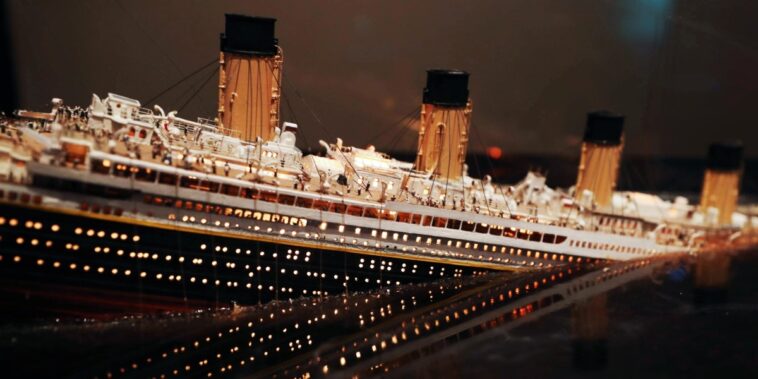On April 15th, 1912, the Titanic struck an iceberg on its journey to New York City, causing the deadliest sinking of a single ship in history. In 1985, its remains were discovered near Newfoundland submerged under some 12,500 feet of water.
Now, in 2023, real-life artifacts from the famous Titanic shipwreck will be tokenized as non-fungible tokens and stored on the blockchain.
The move is being orchestrated through a three-way partnership that involves RMS Titanic (RMST) — the company that acts as steward to the sunken ship, Venture Smart Financial Holdings — a Hong Kong-based firm, and Artifact Labs, a Web3 platform that’s goal is to preserve and connect history on the blockchain.
Here’s what we know so far about the debut collection of Titanic NFTs:
- Artifact Labs is creating 5,500 NFTs linked to real-life recovered artifacts from the Titanic on its in-house blockchain, and future artifacts will be minted as NFTs as well.
- Venture Smart Financial Holdings will structure the tokenizations of the IP linked to the artifacts.
- The NFTs will be offered to accredited investors to fund ongoing research, preservations, recovery, licensing, and the exhibition of RMST assets.
- Holding an NFT offers exclusive benefits, including access to seminars with historians, VIP events, and exhibitions. It will also provide a means to interact digitally with other RMST content.
Beyond the NFTs, Artifact Labs is planning a Titanic DAO (decentralized autonomous organization) to welcome members of its Web3 community to participate in proposals and initiatives for future Titanic exhibitions. It is also expected to facilitate educational programs, documentaries, content, research, events, and future partnerships. The DAO will be funded through the sale of the Titanic NFTs and managed through the use of governance tokens.
Jessica Sanders, the president of RMST, said the organization believes moving into a digital space will help it reach a broader audience, ensuring that the Titanic’s artifacts are “preserved in perpetuity and accessible to future generations.”
Real-Life Objects Are Being Linked to NFTs
For history buffs, collectors, and NFT enthusiasts, the debut Titanic NFTs and Titanic DAO is exciting news. But this isn’t the first time we’ve seen NFTs linked to unique real-life assets. At Rarity Sniper, we’ve covered several articles about NFTs being tied to IRL items. Here are some of the top stories.
About two months ago, Nike’s RTFKT studio teamed up with Division Street to drop an augmented reality helmet NFT collection. The NFTs are linked to 1/291 physical jerseys from the University of Oregon’s football team designed by Todd van Horne.
Next, WISEKey launched eTreeNFT.com, an NFT marketplace aimed at creating sustainable asset-based markets for sequestering carbon dioxide. Users can create NFTs linked to real-life trees, which can be traded on the blockchain. The NFTs track the growth and wellbeing of the tree, and also enable more accurate carbon measurements.
Finally, the world renowned artist Takashi Murakami teamed up with Hublot to release 13 exclusive physical watches paired with NFTs. The physical watchers are unique works of high-level art and engineering. They sold for over $50,000 a piece.
The idea of tying NFTs to physical objects is nothing new. However, we’ve never seen it done with something as rare and historically significant as artifacts from the Titanic. At Rarity Sniper, we’ll be following up on any new developments in the story.


